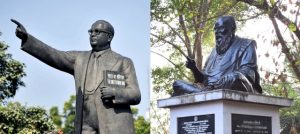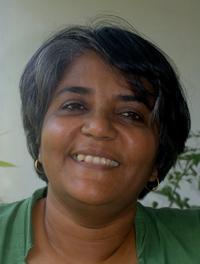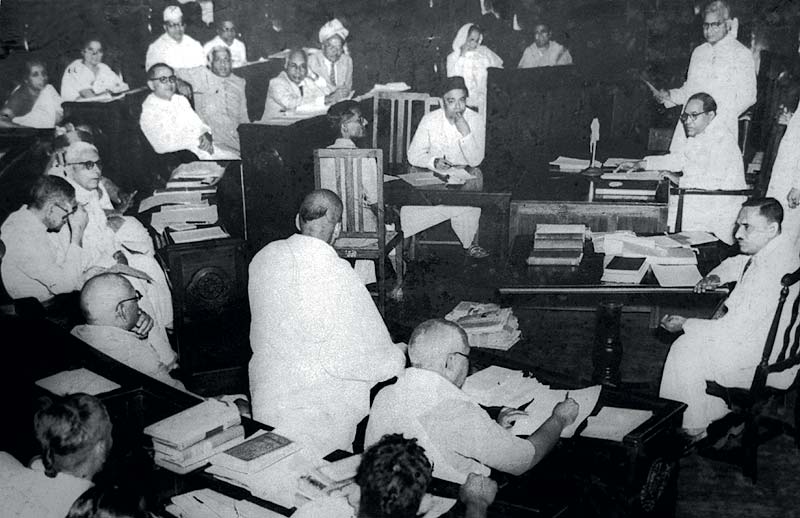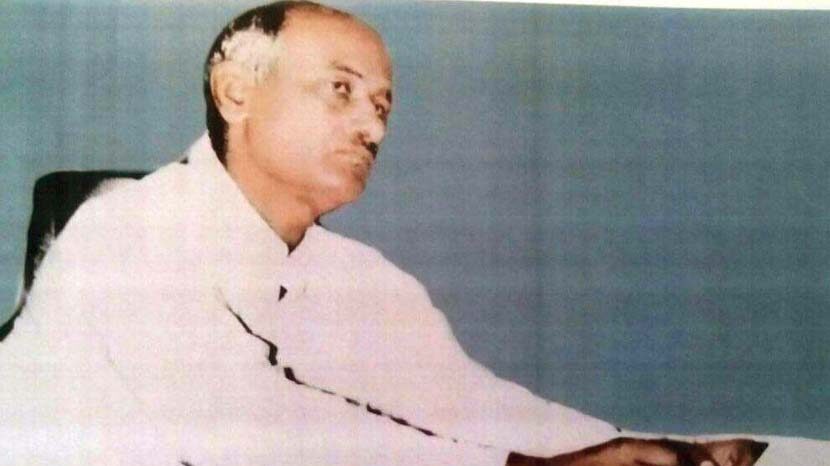Of all the intellectual comradeships within the complex and diverse anti-caste movements in India the one between Babasaheb Ambedkar and E. V. Ramasamy Periyar proved to be consistent
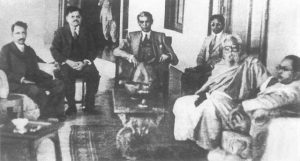
and durable. From the late 1920s, Periyar’s Self-Respect Movement (founded in 1925) extended its support to and expressed admiration for Ambedkar’s work. The burning of the Manusmriti in Mahad in December 1927 had its parallels in Madras, earlier in the year, when M. C. Raja, the Adi-Dravida leader in one instance and J. S. Kannappar, a prominent Self-respecter, in another, consigned that text to flames (KA, 30.10.27; 11.12.27). In 1929, Periyar sent his greetings to the Jalgaon Depressed Classes Conference, and his weekly Kudiarasu hailed the emergence of a “Self-respect” movement in the Bombay Presidency (Kudiarasu (KA), 16.6.1929). Revolt, the only English weekly published by the Self-Respect Movement, reported in detail on conferences convened by the Samata Samaj Dal (this is how the weekly refers to the Samata Sainik Dal), calling attention to Ambedkar’s speeches on two occasions (Revolt, 23 June and 29 September 29, 1929). Obviously inspired and delighted by Babasaheb’s ideas, S. Guruswami, editor of Revolt, declared that if he were made viceroy he would ask for Ambedkar to be the Minister for Law (Puduvai Murasu, 7.12.32).
This expression of solidarity was strongest during the Round Table Conferences and when much of Indian opinion was ranged against Ambedkar’s demand for separate electorates for Dalits. A series of incisive and furious articles was published in Kudiarasu, holding Gandhi to account for claiming that he alone could be said to represent “Untouchable” interests (KA, 18.10.1931; 25.10.1931). The Self-respecters also held public meetings endorsing Ambedkar’s stance on separate electorates and denounced the Moonje-Raja pact (KA, 29.5.32). When Gandhi announced his epic fast, Kudiarasu condemned his stratagem (KA, 18.9.32). The Self-Respect Movement and Periyar were also at one with Ambedkar in seeing through nationalist dissembling with respect to temple entry legislation. Their admiration for and support to Ambedkar continued in the years that followed – and we find Kudiarasu publishing over several weeks (from 24.7.1936) a translation of Annihilation of Caste. These were consolidated into a single volume and published as a book in 1937.
From Eleanor Zelliot’s account of Mahad, it is evident that Ambedkar followed developments in the South keenly, particularly the Vaikom temple satyagraha, initially supported by Gandhi (Zelliot, 2013: 77-78). Periyar played an important role in Vaikom, though it is not clear that his role was spoken of in the English press. Be that as it may, southern developments did not appear too distant for this Maharashtra radical. Thus, during the long-drawn-out struggle in Mahad, Ambedkar quoted with approval a judgment of the Madras High Court that had overturned an earlier ruling on temple-entry rights of Adi-Dravidas (quoted from Bahishkrut Bharat of 6 May 1927 in Anand Teltumbde, 2016). In the 1930s, Ambedkar was in close contact with Depressed Classes’ leaders in Madras, as is evident from his relationship to Rettaimalai Srinivasan, and his rather troubled encounter with M.C. Raja. As we know, he was particularly close to N. Sivaraj, a former Justice Party man, mayor of Madras and a prominent speaker on Self-respect platforms. This relationship fructified in the 1940s, and in the context of the founding of the Scheduled Caste Federation.
In 1940, Ambedkar first met with Periyar and discussed the political prospects that awaited Dalits and Non-Brahmin (Shudra) castes in a future free India. During his visit to Madras in 1944, Ambedkar addressed five meetings in the city (Babasaheb Dr Ambedkar: Writings and Speeches [BAWS], Vol 17, Part III, 2003: 314-338). He again met with Periyar who had just then founded the Dravidar Kazhagam and declared that the “Dravidians” had decided to seek secession from India and form a separate caste-free state of Dravidasthan, aligning themselves directly with the government of Great Britain, rather than British India (KA, 2.9.44). Kudiarasu reported that Ambedkar was not averse to the idea of a Dravidasthan that included his own constituency and territory (KA, 30.4.1944)! In the months that followed, Kudiarasu published extensively on Ambedkar’s position on a number of issues, including on Pakistan, separate electorates and on the non-Hindu status of the so-called untouchables (KA, 30.9.1944; 16.12.1944; 6.1.1945; 13.1.1945).
Periyar was unsure as to whether Ambedkar’s Scheduled Caste Federation stood to gain anything whatsoever by participating in the 1946 elections, since all odds were in favour of a Congress victory (KA, 27.19.1945). Subsequently, writing on the Constituent Assembly debates, Periyar expressed his misgivings over Ambedkar’s legislative labour: for all his efforts, Ambedkar was able only to have untouchability “abolished”, whereas the caste order was not called into question or considered a barrier to the realization of fundamental rights (Viduthalai, 22.9.1951; S. V. Rajadurai, 1993). For all his grim irritation over the assembly proceedings, Periyar stayed with Ambedkar’s decisions during the crucial Hindu Code Bill debates (Viduthalai, 7.2.1951), and later on applauded his efforts to establish Buddhism as a way of life and public choice for Dalits who wished to opt out of Hinduism. In the 1950s, when Periyar’s Dravidar Kazhagam formed an association of “Dravidian” peasants and workers, the party invited Ambedkar to preside over its first conference. But since he was rather unwell at that time, he could not come and sent P. Rajbhoj on his behalf (interview with S.S. Basha, Dravidar Kazhagam activist).

Much of what I have described above has been gleaned from Periyar’s writings and articles published in Self-respect and Dravidar Kazhagam publications. There are likely to be detailed references in Jai Bheem, published from Madras and under the auspices of the Scheduled Castes Federation. Further research into this subject will throw up more instances of the Periyar-Ambedkar relationship, both its productive consequences as well as differences.
Intellectual congruence – and differences
Bhimrao Ambedkar and Ramasamy Periyar were both lifelong critics of what had come to be characterized as Hinduism, and both argued that the object in question was not a stable, unified object of understanding. Ambedkar’s two important essays in this regard: “Annihilation of Caste”, and “The Hindu Social Order” that begins the unfinished India and the Pre-requisites of Communism. The most damning indictment, expounded in these texts and echoed in others, has to do with the manner in which Hindu belief and scriptural texts together sanctify inequality:
The Hindus are the only people in the world whose social order – the relation of man to man is consecrated by religion and made sacred, eternal and inviolate. The Hindus are the only people in the world whose economic order – the relation of workman to workman, is consecrated by religion and made sacred, eternal and inviolate.
It is not therefore enough to say that the Hindus are a people with a sacred code of religion. So are the Zoroastrians, Israelites, Christians and Muslims. All these have sacred codes. … But they do not prescribe, nor do they consecrate a particular form of social structure – the relationship between man and man in a concrete form – and make it sacred inviolate. The Hindus are singular in this respect (BAWS, Vol 3, 1987: 128-129).
Periyar’s critique of Hinduism is found in scores of texts. Based on critical disquisitions of religious texts, rituals, dogma, superstition, the role of Brahmin priests, secular Brahmins in caste society, the oppression borne by the so-called untouchables and women, and finally the refusal of human dignity, rationality and personhood in the caste order, he produced a censure of Hinduism that is best captured in this observation:
Though I have endeavoured all along to abolish caste, as far as this country is concerned, this had meant I carry out propaganda for the abolition of God, Religion, Shastras and Brahmins. For caste will disappear only when these four disappear. Even if one of these was to remain, caste will not be abolished in its entirety… because caste has been constructed out of these four … only after man had been made a slave and a fool would caste have thus been imposed on society. One cannot abolish caste without instilling a taste for freedom and knowledge [in the people]. God, Religion, the Shastras and Brahmins make for the growth and spread of slavery and folly and strengthen the existence of caste (Periyar: Ninety-third Birthday Souvenir 17-9-71).
In essence both men argued for the inseparability of caste from Hinduism, and both from brahmanical privilege and intellectual hegemony. Neither was convinced that the Hindu social and cultural order could be reformed from within. Ambedkar took issue with the Jat-Pat-Todak Mandal on this account, and noted that should they imagine that they could reform their “Vedic” faith, they ought to render it open to the claims of liberty, equality and fraternity. This suggestion was made with full knowledge that this was an impossible task and that Hinduism would cease to be what it was if it were to thus remake itself (See Sections XXI-XXIV of Annihilation of Caste, BAWS, Vol 1, 1979: 69-78). Periyar too had no illusions about what might be achieved from within the Hindu faith: while he was sympathetic to those who strove to abolish untouchability, while remaining devout Hindus, he was sharply critical of their good faith in what they set about to achieve. Thus, notwithstanding his early affection for and endorsement of Gandhi, Periyar was sharply critical of Gandhi’s insistence that untouchability and varnadharma were separable and that one merely enjoined a set of duties, whereas the other was pure evil (KA, 7.8.1927).
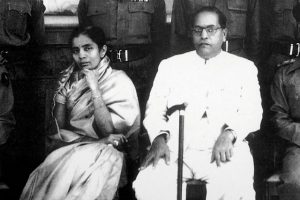
Both men distinguished the claiming of religious rights denied to Shudras and Dalits as an essentially civic demand, and not one that required the claimant to ally himself or herself with the Hindu faith. As Ambedkar said of the clamour over temple entry:
Why should an Untouchable beg for admission in a place from which he has been excluded by the arrogance of the Hindus? This is the reason of the Depressed Class man who is interested in his material welfare. He is prepared to say to the Hindus, “to open or not to open your temples is a question for you to consider and not for me to agitate. If you think, it is bad manners not to respect the sacredness of human personality, open your temples and be a gentleman. If you rather be a Hindu than be gentleman, then shut the doors and damn yourself for I don’t care to come” (BAWS, Vol 17, Part 1, 2003: 198-99).
Periyar too held similar views on temple entry – that it was a right of access to a public space, built with Shudra and Panchama labour that he and others were defending, and not the right to enter temples and be part of the Hindu faithful (KA, 22.1.1932; 20.10.1932; 20.11.32).
Shudras and Untouchables
Reflecting on the caste order, Ambedkar famously defined it as being structured on the basis of “graded inequality”, marked by an ascending scale of reverence or respect and a descending scale of humiliation or hatred. He was particularly sensitive to the plight of the so-called non-Brahmin “Shudra” castes: since they could neither afford to be bountifully indulgent as the twice born, nor could they imagine they had nothing to lose, in fighting caste. They were not as powerful as the former, but neither were they placed outside of the caste compact, as the latter. In his important book, Who Were the Shudras? (and also in Revolution and Counter-revolution in Ancient India), he suggested that the Shudra castes had been wilfully cast into low and impure status, because some among them had dared challenge the twice born; and that their low status and social degradation happened at the time when the varna order transited into the complex jati system (BAWS, Vol 7, 1990: 9-12). In another instance, he pointed out, though labourers, Shudras were still counted among those who were internal to the varna order, unlike the Untouchables who were placed outside it. In this sense, there was a difference in the oppression that the Shudras suffered at the hands of the twice born, and the exploitation and oppression visited on the Untouchables by all those who were within the pale of the varna-jati order (BAWS, Vol 5, 1989: 164-169).
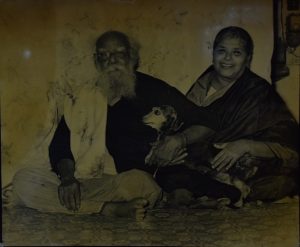
Periyar’s views were not dissimilar: he pointed to how each of us carries within ourselves a sense of the caste spirit, as if it were a ladder that we use to define our standing place (KA, 12.4.1931). He remonstrated with non-Brahmins on the question of their aversion to forging comradeship with Dalits, and warned them that if they did not address the question of untouchability and yet insisted on opposing Brahmin tyranny, their liberation was bound to be incomplete (KA, 13.5.1928). He also chided them for their imperfect democratic sentiments: he noted that he could understand that Brahmins were not committed to ending untouchability or the caste order, but he could not countenance non-Brahmins wanting to hold on to the latter (KA, 30.11.1930). On the other hand, he was alive to the essential cunning of the caste order, and the prerogative that it granted Brahmins and the twice born: and as he observed wryly, neither wealth which Tamil merchant castes such as the Chettiars possessed in abundance, nor talent which non-Brahmin musicians undoubtedly had, rendered them equally human in the eyes of the Brahmin, who at all times strove to remain exclusive and sought to insistently differentiate himself from all others (KA, 25.3.1944; 20.4.1930).
However, there was this crucial difference in how Babasaheb and Periyar translated their sense of the place of Shudras in the caste order into meaningful political practice. Periyar strove to build what, following Gramsci, we might call, a non-Brahmin historic bloc, which included the Shudra castes and Dalits and would weather the attractions of nationalism and the Congress, particularly its upper caste, “Brahmin-Bania” leadership. He imagined too that such a bloc would make possible open social interaction, including conjugal ties across the caste order. He was aware of the economics of the caste order, and how it consistently devalued labour, and the vital, civilization-building skills possessed by Shudras and Dalits; he was also alive to the blocking of access to common resources, such as education, employment across sectors and presence in government, which happened on account of the caste order. But he did not conceptualize the relationship between Shudras and Dalits in terms of political economy; rather, he viewed the persistence of caste feeling among the former chiefly in terms of an unregenerate consciousness.
Ambedkar, on the other hand, was alive to the very real material differences that separated the world of Shudras and Dalits. On several occasions, he spoke of the power of social boycott on Dalits and how this rendered them economically dependent on the upper castes and helped secure their oppression. Keenly aware as he was, and supportive of the democratic aspirations of the Shudras, he was equally aware of the fact that some among them were economically powerful. He made it clear to them, as he did, for instance, at a meeting called forth by Madras non-Brahmins, who were inimical to Periyar, that it was only their willingness to be alive to the sufferings of their oppressed brethren, both poorer non-Brahmins and Dalits, that would render them democratic subjects (BAWS, Vol 17, III: 319-320). Significantly, he had taken the part of poor non-Brahmin tenants in the Konkan region, when they protested the power invested in the khots, or the revenue-farming intermediaries who mediated between the actual peasant and agricultural worker and the State (Santosh Suradkar, 2013). Subsequently, too, he argued for the rights of tenant farmers (many of whom were likely to be from Shudra castes) against eviction, and for the security of their tenure (BAWS, Vol 15, 1997: 958-960). His demand for the collectivization of land, however idealistic it seemed then or seems now, was also one that sought to undercut the complex caste-based political economy of agriculture.
The women’s question
On one crucial issue to do with the caste order, Ambedkar and Periyar stood together: the women’s question. Ambedkar’s complex sense of women’s role in sustaining the caste order was first articulated in a student seminar, and published subsequently as Castes in India. He returned to this theme in the 1940s: in Revolution and Counter-revolution in Ancient India, he indexed the various strictures against women from the twice-born communities, as well as on women in general, as found in the dharmashastras, particularly the Manusmriti. He pointed to how these texts sought to control and regulate women’s lives, with respect to marriage and childbirth, often through threats, violence and the imposition of humiliating conditions of existence on women who were either childless, widows … He argued that the texts were bent on securing legitimacy to practices that would uphold endogamy, restrict women’s choices, and render difficult, if not impossible, the mixing of castes, socially and sexually (BAWS Vol. 3, 1987: 293-295). He went on to argue that the control of women, which was secured through cruel means of disposal of what he termed “surplus” women was a crucial aspect of the triumph of Brahmanism against Buddhism (ibid, 296-301). He argued too that the institution of “matrusavarnya” or descent reckoned through the mother, as defined by the Manusmriti, helped legitimize the twice-born male’s right to possess and enjoy women from other castes, and to degrade and keep within their castes, children born of such unions (ibid, 308-310).
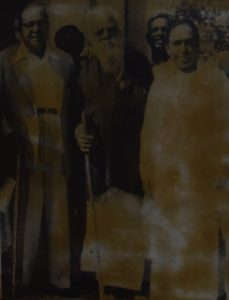
Periyar approached the women’s question from another angle: the denial of women’s rights, he noted, had to do with the sexual politics of marriage, motherhood and the family. Being the core of the caste order, the family was a site of both affection and control and it was here that women’s (and men’s) social personalities were honed and developed. Masculinity and femininity, Periyar observed, were both constructions, and one had to learn to see beyond the obvious and understand that there was a general mass of human qualities that both men and women possessed – and that if anything set women apart, it was their ability to bear and sustain life. Yet, women were viewed as lesser beings, and consigned to the realm of the family, to carry out repetitive and tiresome household tasks that underdeveloped their minds, consciousness and rendered them captive to a set of values that degraded them; in short, women were slaves to notions of beauty and chastity, ideal wifehood and motherhood. Religion and custom urged them into slavery of this sort, and refused to let them be mistresses of their fate. However, since knowledge and reason were as available to women as men, women could free themselves – and on their own accord and due to their own effort (V. Geetha and S.V. Rajadurai, 2008: 369-375; 382-389).
Ambedkar termed acts of reform pertaining to widow remarriage or child marriage and raising the age of consent as having to do with the caste Hindu family, and while important, these were not consequential to the reform of caste Hindu society, which he argued was a pre-condition of women’s freedom and equality. Periyar held that reform of women’s status cannot be had without revolutionizing their minds and consciousness and disabusing them of the power of faith and the call of religion. This in turn, he held, would enable them transform the family and by implication transcend and do away with the limits of the caste order.
Buddhism and Dravidasthan
The premium that both men set on social change, rather radical social reform of both gender and caste relations, was on account of their deep distrust of the nationalist project. Ambedkar did not imagine that anti-imperial nationalism in itself could help build a free, equal and just Indian nation – and considered nationalist aspirations limited and not likely to place the future nation on a firm democratic or republican basis. For, nationalists were given to fulsome praise of and pride in the past, glorious custom and precedent, and it did not matter to them that this pride in the past naturally meant that the caste order with Brahmins presiding over it would remain intact (BAWS, Vol 9, 1990: 204-210). Periyar was, likewise, unimpressed by Indian nationalism’s rhetoric and likened it to religious fervour – and argued that the Hindu upper castes, presided over by the pious Gandhi, had recast nationalism as a form of worship. The piety invoked by the idea of a unified nation was such that it brooked no critique and in the event justified the easy alignment of religious fervour and political sentiment, and legitimized nationalist disregard for social equality (KA, 24.9.1933).

Significantly, both men were keenly sensitive to the interplay between caste and class in the nationalist imagination. This was evident in their pronouncements in the 1940s, when both men were most radical in their critique of the nation state to be. Periyar never tired of attacking its “Brahmin-Bania” character, and brought a veritable socialist edge to his critique well into the late 1940s. Ambedkar did the same, particularly in the prescient essay titled, “A Plea to the Foreigner” (BAWS Vol. 9: 199-238).

However, there were differences in their attitude to free India. Ambedkar, with his abiding commitment to the rule of law and the possibilities for justice and equality that lay immanent in a democratic republic, was as much a state builder as a social radical: he favoured a unified India where local and caste habits and authority would be superseded by an authority that emanated from the Constitution and a central government and parliament that notionally at least prevailed over regional and caste parochialism. Ironically, though, Ambedkar was soon to exchange his passionate commitment to nation- and state-building for another sort of labour – of constituting a radical utopian community, given over to the teachings of the Buddha.
Periyar, on the other hand, was unmoved by the idea of India, and instead argued for a separate anti-caste republic, Dravidasthan, which would do away with the power of faith, priesthood, caste and custom. While yet an idealistic and future political project, the cause of Dravidasthan served Periyar and his constituency to articulate a sustained critique of the Indian nation state, particularly its ‘Brahmin-Bania’ core. Interestingly, Periyar was not unaware of the productive consequences of good governance, and lent his wholehearted support to the Congress Ministry of K. Kamaraj in post-independent India – since he was regarded as someone committed to social justice and Dravidian welfare.
‘Division of labourers’ and the ‘caste worker’
What both men did not do was to reimagine sovereignty. While they were clear that the people were sovereign – Ambedkar was very clear on this matter – and not the nation state, neither man conceptualized the people as an active force in history. Ambedkar, for instance, argued the importance of and called for the making of resilient democratic arrangements and institutions, including Parliament and the executive; whereas Periyar reposed faith in rational discretion, a quality that he argued, human beings can and must aspire to. For both men, social democracy, that is reworked social relationships, was the ultimate guarantor of the good and just society, and in this sense, they turned to the people, but who among the people were to carry out this transformative task?
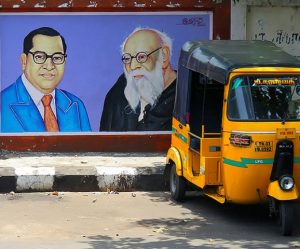
Part of the problem had to do with their unease over the idea of the “people”. For one, both Congress nationalism and Communist practice had characterized the “people” in ways that did not take into account their existence as caste beings. While they found it easy to dismiss the nationalist vision of the “people” they were drawn to as well as troubled by the Communist agenda, and the central role it accorded to the proletariat with respect to social transformation. Aware as they were of the economic exploitation endured by the labouring classes, they were equally aware of how caste differences persisted among the latter, and mitigated the emergence of a unified class consciousness. Thus Periyar argued that Communists must learn to distinguish the caste worker and the wage worker (Viduthalai, 16.2.1940). The former imagined his progress in terms of how much he was able to manoeuvre his way up the caste ladder and hence did not see himself in terms of the labour power he possessed and expended.
Ambedkar pointed out the caste system was, in actuality, a division of labourers, and made for an alienation that had to do not only with the worker’s insertion into production relations and modes which appropriated his labour to produce surplus value, but with frozen labour conditions, imposed by caste. Alienation in the Indian context, he noted, was due to the worker being burdened, on account of his birth, with labour that he might or might not wish to perform, and which he might or might not do well. This choicelessness, and the tedium that grew out of it did not make a self-conscious worker; rather it reproduced the caste person. For both men, therefore, the proletariat could not be assigned a transformative role unless it consented to the annihilation of caste – to paraphrase Ambedkar, the working class ought to be seized of a sense of justice and only then could it purport to be a revolutionary class (BAWS, Vol 1, 1979: 44-48).
Their stringent and incisive critique of the Communist faith in the working class and their insistence that the cause of labour cannot be served without a concomitant commitment to the annihilation of caste were ideas that they expounded all their lives, and in this sense, they looked to constitute an ideal and elusive agent of historical change.
In this context, it would be useful to understand how both men theorized the sphere of political economy. Ambedkar was drawn to Soviet-inspired socialist planning and to the idea of the welfare state, as this existed in post-Depression Great Britain. In his student days in London, he had been inspired by Fabian socialist arguments that urged the State to ensure distributive justice. But typically, he rethought these arrangements in the Indian context – and sought to combine, in his vision of a just economy, Soviet-style collective farming, State-owned industry as well as private, entrepreneurial initiative. In addition, he accorded a central role to the State in reordering its own apparatuses of rule, insisting on positive discrimination for Dalits and Shudras, both in the case of electoral politics as well as recruitment into State services (States and Minorities is a comprehensive statement of this vision [BAWS, op.cit, 383-449]).
Periyar too was drawn to the socialist project, and in the 1950s, his Dravidar Kazhagam set up its own workers’ organization. However, he did not consistently articulate a view of how economic life ought to be arranged, though he expounded the importance of a productive life – on progress through industrialization and, like Ambedkar favoured the re-peopling of State institutions, through an actively pursued policy of reservation for the non-Brahmins and Dalits in state service. In pre-Independence times, he spoke of the importance of doing away with usury, reforming land tenure and ensuring a just distribution of wealth. His movement railed against the enormous economic clout invested in the temple-based agrarian economy of the Tamil country, and argued that the “stone” capitalist resident in temples had to be challenged as much as the capitalist in modern times (Viduthalai, 21.8.1947). In the context of the demand for Dravidasthan, Periyar spoke out against the decisive role essayed by the “Bania” in Indian affairs, as we had seen. There is no reason to think he gave up on his vision of an economically just society in subsequent years, though it was not accorded a specific shape or political character.
Limitless compassion and existential doubt
Periyar and Ambedkar developed their points of view and arguments in the context of historical circumstances given to them, and which they desired to transform. Thus, their responses to the world were contingent and polemical, productive and strategic, and philosophical and reflective; and at all times they strove to mark a transcendent horizon against which one might measure and remake the present. For Ambedkar this transcendence was defined by liberty, equality and fraternity and at its richest translated into the Buddhist idea of maitri, or mindful social fellowship. For Periyar, the endless capacity of human reason to discern, assess and establish the good and the just in historical time appeared a defining line against which one may weigh the importance as well as mutable nature of one’s struggles. Limitless compassion in the one and existential doubt in the other led both of them to remain rooted in the here and now, while not surrendering to the limits imposed by the present.
In and through their differences, and their undeniable similarities, Ambedkar and Periyar point to the Dalit and Shudra communities’ magnificent reckoning with modernity, which continues to inspire those drawn to their worldviews, particularly those who have been wounded by the caste order. This reckoning may be a distant memory today, but we need to recall it, and explore its historical potential and utopian fervour.
References
Note: Periyar’s writings have been drawn from various numbers of Kudiarasu, Puduvai Murasu and Viduthalai, Tamil weeklies, published by his movement; translations from the Tamil by V. Geetha and S.V. Rajadurai.
Babasaheb Ambedkar: Writings and Speeches, Vols. 1 (1979); 3 (1987); 5 (1989); 7 (1990); 9 (1990); 15 (1997); 17 Parts 1 & 3 (2003), Education Department, Government of Maharashtra.
V. Geetha and S. V. Rajadurai, Towards a Non-Brahmin Millennium: from Iyothee Thass to Periyar, Samya, 2008 (Second Edition).
S. V. Rajadurai, Hindu-Hindi-India, 1993, Manivasagar Pathipagam.
Suradkar, Santosh, The Anti-Khot Movement in the Deccan, 1920-1942, V. V. Giri National Labour Institute, 2013.
Teltumbde, Anand, Mahad: The Making of the First Dalit Revolt, Primus Books, 2016.
Zelliot, Eleanor, Ambedkar’s World: The Making of Babasaheb and the Dalit Movement, Navayana, 2013.
Forward Press also publishes books on Bahujan issues. Forward Press Books sheds light on the widespread problems as well as the finer aspects of Bahujan (Dalit, OBC, Adivasi, Nomadic, Pasmanda) society, literature, culture and politics. Contact us for a list of FP Books’ titles and to order. Mobile: +919968527911, Email: info@forwardmagazine.in
